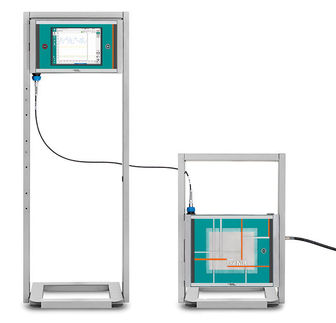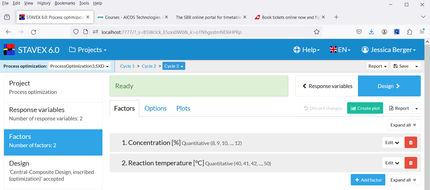| Integrin-binding bone sialoprotein (ibsp, bone sialoprotein, bsp, bspII, spII)
|
| Identifiers
|
| Symbol
| IBSP
|
| Entrez
| 3381
|
| HUGO
| 5341
|
| OMIM
| 147563
|
| RefSeq
| NP_004958.1
|
| UniProt
| P21815
|
| Other data
|
| Locus
| Chr. 4 q21-q25
|
Bone sialoprotein (BSP) is a component of mineralized tissues such as bone, dentin, cementum and calcified cartilage. BSP is a significant component of the bone extracellular matrix and has been suggested to constitute approximately 8% of all non-collagenous proteins found in bone and cementum [1]. BSP was originally isolated from bovine cortical bone as a 23-kDa glycopeptide with high sialic acid content, as described in separate reports by Williams and Peacocke [2] and Andrews and Herring [3] in 1965. Native BSP has an apparent molecular weight of 60-80 kDa based on SDS-PAGE, which is a considerable deviation from the predicted weight (based on cDNA sequence) of approximately 33 kDa [4]. The mammalian BSP cDNAs encode for proteins averaging 327 amino acids, which includes the 16-residue preprotein secretory signal peptide. Among the mammalian cDNAs currently characterized, there is an approximate 45% conservation of sequence identity and a further 10-23% conservative substitution. The protein is highly acidic (pKa of ~ 3.9) [5] and contains a large amount of Glu residues, constituting ~22% of the total amino acid.
Structure
Secondary structure prediction and hydrophobicity analyses suggest that the primary sequence of BSP has an open, flexible structure with the potential to form regions of α-helix and some β-sheet [6]. However, the majority of studies have demonstrated that BSP has no α-helical or β-sheet structure by 1D NMR [7] [8] and circular dichroism [9]. Analysis of native protein by electron microscopy confirm that the protein has an extended structure approximately 40 nm in length [10]. This flexible conformation suggests that the protein has few structural domains, however it has been suggested that there may be several spatially-segmented functional domains including a hydrophobic collagen-binding domain (rattus norvegicus residues 36-57) [11], a hydroxyapatite-nucleating region of contiguous glutamic acid residues (rattus norvegicus residues 78-85, 155-164) [12] and a classical integrin-binding motif (RGD) near the C-terminal (rattus norvegicus residues 288-291).
BSP has been demonstrated to be extensively post-translationally modified, with carbohydrates and other modifications comprising approximately 50% of the molecular weight of the native protein [13][14][15]. These modifications, which include N- and O-linked glycosylation, tyrosine sulfation and serine and threonine phosphorylation, make the protein highly heterogeneous.
Function
The amount of BSP in bone and dentin is roughly equal,[16] however the function of BSP in these mineralized tissues is not known. One possibility is that BSP acts as a nucleus for the formation of the first apatite crystals.[17].As the apatite forms along the collagen fibres with in the extracellular matrix, BSP could then help direct, redirect or inhibit the crystal growth.
References
- ^ Fisher, L.W., McBride, O.W., Termine, J.D., Young, M.F. Human bone sialoprotein. Deduced protein sequence and chromosomal localization. J. Biol. Chem. 1990 265:2347-51. PMID 2404984
- ^ Williams, P.A., Peacocke, A.R. The physical properties of a glycoprotein frombovine cortical bone (bone sialoprotein). Biochim. Biophys. Acta. 1965 101:327-35. PMID 5862222
- ^ Herring, G.M. Comparison of Bovine Bone Sialoprotein and Serum Orosomucoid. Nature 1964 201:709. PMID 14139700
- ^ Fisher, L.W., Whitson, S.W., Avioli, L.V., Termine, J.D. Matrix sialoprotein of developing bone. J. Biol. Chem. 1983 258:12723-7. PMID 6355090
- ^ Stubbs, J.T., 3rd, Mintz, K.P., Eanes, E.D., Torchia, D.A., Fisher, L.W. Characterization of native and recombinant bone sialoprotein: delineation of the mineral-binding and cell adhesion domains and structural analysis of the RGD domain. J. Bone Miner. Res. 1997 12:1210-22. PMID 9258751
- ^ Shapiro, H.S., Chen, J., Wrana, J.L., Zhang, Q., Blum, M., Sodek, J. Characterization of porcine bone sialoprotein: primary structure and cellular expression. Matrix 1993 13:431-40. PMID 8309422
- ^ Fisher, L.W., Torchia, D.A., Fohr, B., Young, M.F., Fedarko, N.S. Flexible structures of SIBLING proteins, bone sialoprotein, and osteopontin. Biochem. Biophys. Res. Comm. 2001 280:460-5. PMID 11162539
- ^ Stubbs, J.T., 3rd, Mintz, K.P., Eanes, E.D., Torchia, D.A., Fisher, L.W. Characterization of native and recombinant bone sialoprotein: delineation of the mineral-binding and cell adhesion domains and structural analysis of the RGD domain. J. Bone Miner. Res. 1997 12:1210-22. PMID: 9258751
- ^ Tye, C.E., Rattray, K.R., Warner, K.J., Gordon, J.A., Sodek, J., Hunter, G.K., Goldberg, H.A. Delineation of the hydroxyapatite-nucleating domains of bone sialoprotein. J. Biol. Chem. 2003 278:7949-55. PMID 12493752
- ^ Oldberg, A., Franzen, A., Heinegard, D. The primary structure of a cell-binding bone sialoprotein. J. Biol. Chem. 1988 263:19430-2 PMID 3198635
- ^ Tye, C.E., Hunter, G.K., Goldberg, H.A. Identification of the type I collagen-binding domain of bone sialoprotein and characterization of the mechanism of interaction. J. Biol. Chem. 2005 280:13487-92. PMID 15703183
- ^ Tye, C.E., Rattray, K.R., Warner, K.J., Gordon, J.A., Sodek, J., Hunter, G.K., Goldberg, H.A. Delineation of the hydroxyapatite-nucleating domains of bone sialoprotein. J. Biol. Chem. 2003 278:7949-55. PMID 12493752
- ^ Fisher, L.W., Whitson, S.W., Avioli, L.V., Termine, J.D. Matrix sialoprotein of developing bone. J. Biol. Chem. 1983 258:12723-7. PMID 6355090
- ^ Kinne, R.W., Fisher, L.W. Keratan sulfate proteoglycan in rabbit compact bone is bone sialoprotein II. J. Biol. Chem. 1987 262:10206-11. PMID 2956253
- ^ Ganss, B., Kim, R.H., Sodek, J. Bone sialoprotein. Crit. Rev. Oral. Bio. Med. 1999 10:79-98. PMID 10759428
- ^ Qin C et al. (2001) A comparative study of sialic acid-rich proteins in rat bone and dentin. Eur J Oral Sci 109:133-141. PMID 11347657
- ^ Huter GK & Goldberg HA (1994) Modulation of crystal formation by bone phosphoproteins: role of glutamic acid-rich sequences in the nucleation of hydroxyapatite by bone sialoprotein. Biochem J 302:175-179 PMID 7915111
|







